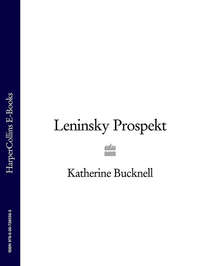
Полная версия
What You Will
One woman, the most maidenly, the most downcast, was carrying a vase exactly like this vase on which she was portrayed.
‘Loutrophoros,’ Gwen muttered to herself.
For there was the name of the vase shape typed across the top of Hilary’s notes. Carrier of washing water. A vase as awkwardly tall and thin as a leggy girl – easy to sweep off its foot, narrow-necked, but with a wide, inviting mouth which was shaped almost flat like a plate to catch and funnel precious liquid so that none might be spilled. Did they mean it to seem like the way into a womb? Gwen wondered. This was the vase in which they kept the sacred water to purify you for marriage, or for your funeral if you died without marrying. Undamaged, like the virginal belly it suggested. Maybe it had been unearthed from a grave, buried with a maiden still unmarried at her death, and that’s why we have it whole.
So what does that tell us about marriage for them? Gwen wondered. Right up there with death? They stayed at home with their children, they kept house, cooked and sewed. Submissive, hemmed in. Didn’t get out much to chat to Alcibiades over a kylix of wine and water, or to throw javelins at the Olympic Games. What choices did they have? Gwen wondered. She simply couldn’t imagine having no choices. They must have had ideas, sensations, plans. What did they sacrifice? They left nothing behind in words. On the other hand, neither did Socrates. We have only what the others recorded. And he was the Master of them all.
She put the photograph back into its sleeve, poured out coffee, thinking of Hilary, wondering whether this part of Doro’s collection was to be kept or sold, wondering how much Hilary minded. I might catch something before it’s dispersed, preserve it. Hilary might like that. She remembered eighteenth-century engravings by Piranesi. Earlier ones by Dürer, Goltzius. And handcoloured things in books. The self-styled Baron d’Hancarville’s illustrations of William Hamilton’s collection of antiquities. Tischbein’s. There was John Flaxman, the sculptor. Fascinated by Herculaneum, Pompeii, she thought. Lots of people were. Or much later, Beazley, the Balliol scholar, sketching vase after vase, making tracings, developing his method.
She merely fussed over the meadow, distracted by Hilary’s face, by the vase, and by the little offering she had in mind to make from it. It wasn’t long before she leaned her palette up against the wall, stuck her brushes in a jar of spirits in the sink, and began to sort through the bottom drawer of the mammoth brown chest that stood against the radiator.
She found a newish sketchbook; it was a good size, eleven by fourteen, with porous paper. She struggled with the drawer for a while, kneeling, lifting, pushing against its swollen groans. The weight was all on one side – clinking hammers, small saws, chisels, tacks. Needs rearranging, she thought, abandoned it gaping, and laid the sketch pad down flat on the workbench. Her hinged green tin box of watercolours was on top of the chest. She sharpened a pencil and stood over the photograph, calculating proportions. Then she sketched the geometry of the vase with swift strokes, thinking, To copy on to the shape of the vase a scene which contains the shape of the vase is called mise en abyme. First the potter, then the vase painter, now me. She felt the giddying pull of it, the palimpsest reaching right back through time, as if it were something she could dive into. I can lose myself in this, she thought.
She pulled up a tall stool and sat against the edge of it. As she outlined their forms and their faces, Gwen no longer wondered at all about the women on the vase. It didn’t seem to her as if the women had ever been real. She could remember that when she had been a student, her professors liked to discuss what could be found out about life in, say, fifth century BC Athens, by looking at what was depicted on a vase. Social history on the side of a ceramic object. She didn’t believe such a scene could be real. It came from inside someone’s head. The very place where people part ways with so-called reality.
What she believed was that the clay was real and that whoever had made the clay into a vase was real and that whoever had painted the decoration on the vase was also real. Otherwise it was more like decoration on an Easter egg: it was what the maker had thought of on the day – a pattern, a momentary conclusion, at best a recollection. This might look nice, the painter had thought. Pleasing his eye, pleasing his patron, pleasing his master if he was a slave. But whenever Gwen had tried to discuss this with her professors they had always explained in a remedial tone, Ah, but the Greeks weren’t like that. They weren’t interested in self-expression. They were craftsmen. And she had always wanted to insist, No, that’s not what I mean. I’m not talking about self-expression. It’s just a practical fact about making something. It’s how it happens, if you concentrate at all. You have to abandon what you really
Конец ознакомительного фрагмента.
Текст предоставлен ООО «ЛитРес».
Прочитайте эту книгу целиком, купив полную легальную версию на ЛитРес.
Безопасно оплатить книгу можно банковской картой Visa, MasterCard, Maestro, со счета мобильного телефона, с платежного терминала, в салоне МТС или Связной, через PayPal, WebMoney, Яндекс.Деньги, QIWI Кошелек, бонусными картами или другим удобным Вам способом.






